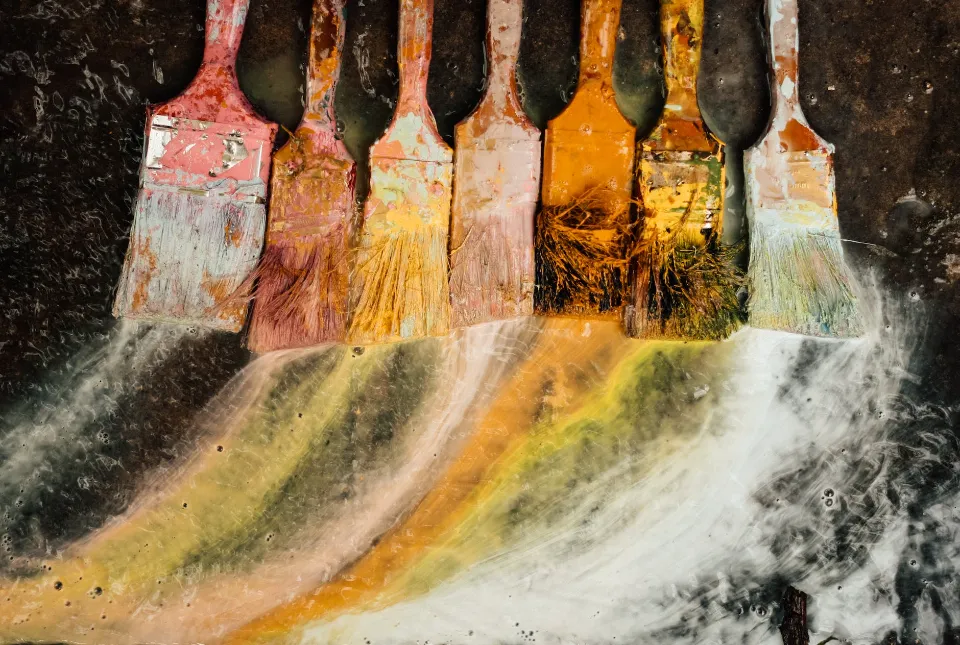Whether it is used to make dresses, underwear, or anything else, silk has a virtually unrivaled reputation as a luxurious fabric. Silk is one of our favorite textures, and it should be—it feels and looks amazing. However, luxury comes with high maintenance, and one of the most challenging aspects of silk is knowing how to keep it looking clean and wrinkle-free. Knowing how to iron silk is crucial whether you’re laundering your favorite dress shirt for work, packing a silk slip for your upcoming vacation, or trying to restore a vintage silk item. Here’s how to care for your favorite silk clothing expertly.
Table of Contents
Part1:Prepping The Silk
1. The silk should be damp after receiving a water spritz. Given that it is more delicate than other fabrics, silk can be difficult to work with. Spraying tap water on the material’s surface will help the ironing process go much more smoothly by preventing burning.
- If you iron dry silk, the texture might be ruined.
- The best time to iron silk is right after washing it. Wait until the item is mostly dry but still slightly damp; this will help you avoid having to spritz it down beforehand.
2. To protect the silk, turn the garment inside-out. Try to minimize any contact the iron has with the actual silk because it is such a delicate fabric. In light of this, turn the item inside-out to give the silk additional protection.[3]
- For example, when ironing a silk shirt, the body and the sleeves must both be turned inside-out.
3
Make the silk flat on your ironing board by smoothing it out. With your hands, smooth out any noticeable creases to make the fabric as smooth as possible. Working in sections might be necessary if your silk item is particularly large, such as a dress or dress shirt.[4]
- When ironing a dress shirt, for example, you might start by flattening and ironing the chest area before moving on to the sleeves.
4
Place a press cloth on top of the silk. Avoid ironing silk directly because it needs a “buffer” of sorts between the iron and the fabric itself because it is so delicate. This is referred to as a “press cloth,” but it can actually be any lint-free material that covers your silk. Any little square of cloth will do.[5]
- To prevent color from transferring to your silk, press with a white or light-colored cloth.[6]
- To prevent anything from transferring while you iron, use a lint-free cloth.
Part2:Ironing Instructions
1. Set the lowest heat setting on your iron. So that you don’t run the risk of doing any harm to your silk, turn your iron way down.[7] Many contemporary irons have special fabric settings; if yours does, set it to the “silk” setting.[8]
- If your iron is set to a high temperature, your silk might yellow.[9]
- Use your iron’s steam setting if it has one.[10]
2. Place the iron in the center of the press cloth and apply pressure for a brief period of time. Don’t worry about moving your iron from side to side; just concentrate on keeping it stationary. For a few seconds, press down. If you continue past that point, you risk accidentally burning or damaging the material.[11]
- It might be beneficial to iron in a specific direction depending on what you are ironing. For example, if you are ironing a silk tie, begin at the bottom and move up.
3. Give the silk a few seconds to cool off after lifting the iron straight up. Before tackling the next piece of silk, raise the iron straight up off the silk’s surface. Move on to another section of material after a brief delay to allow the material to cool slightly.
4. Along your silk, repeat the pressing and lifting pattern. Place the press cloth on a different area of your silk item. The press cloth should be moved as you press the iron down for a short time before lifting it back up. Continue doing this until you have ironed the entire item.
- There’s no need to worry about moving the silk if you’re using a sizable press cloth that covers the entire piece.
5. After ironing your silk, you can wear it, put it on display, or hang it up. Before removing the silk from the ironing board, allow it to dry and cool completely. Before wearing or displaying the item, turn it right-side out once more.
- Hang the silk up in a dry, dark place away from windows and fluorescent lighting if you don’t intend to use it right away.
- Since silk is so attractive to moths, it is best to keep mothballs or other moth repellents nearby.
Pay Attention
1. Prep the Fabric
To help silk retain its texture and integrity, the fabric must always be damp when ironing. After hand-washing a garment, consider spraying it down with water and ironing it right away. Turn the garment inside out while ironing.
2. Focus on Steam, Not Heat
To iron silk without damaging it, it’s crucial that you use the lowest heat setting on your iron. The best option is to use an iron that has a silk setting, which many have. Place the press cloth on top of the item, then lay it flat on the ironing board. An alternative to a press cloth is a handkerchief, pillowcase, or hand towel.
3. Pressing vs. Ironing
Most of us picture dragging the iron across the fabric when we think of ironing. One of the key tips in properly ironing silk is to minimize ironing back and forth. Pay special attention to prominent wrinkles when pressing silk. Through the press cloth, gently press downward. Repeat on a different fabric section after lifting the iron and allowing the area to briefly cool. Keep in mind that pressing silk does not mean leaving the iron in place for a long period of time. The silk won’t burn if you use the iron on the fabric for the shortest possible time, even when using a press cloth.
4. Avoid Further Wrinkling
To avoid wrinkles before they occur is one of the most crucial aspects of ironing silk. Every piece of fabric should be perfectly flat when being ironed. To prevent adding new wrinkles, make sure the garment is taut. An additional error is taking the item out of the ironing board before it has finished cooling. Make sure that it is cool and dry before removing your clothing from the board. Your efforts will be rewarded with silk that won’t wrinkle thanks to this.
The next step is to precisely shrink a shirt to the appropriate size.
What Takes Place When You Iron Silk?
Your lovely pillowcases or bedding burning when ironing silk is your biggest concern. Additionally, silk can burn fairly easily—trust us on this. Silk is made of protein, just like your hair. This explains why sheets and pillowcases made of pure mulberry silk are so hydrating to your skin and hair. If you’ve ever scorched your hair with a flat iron, you know what it feels like. Silk, however, will also burn when exposed to high heat. In fact, the fabled “burn test” is frequently employed to ascertain whether a piece of fabric is in fact silk. burns similarly to hair (with ashes) while polyester satin tends to melt like plastic. (Become more knowledgeable about how to distinguish between real and fake. fake silk.) The biggest challenge is therefore to remove wrinkles from silk without damaging the delicate fabric.
Silk Care Pro Tip: Irrespective of whether it’s wet or dry, silk should never, ever be exposed to heat. Silk sheets should be washed in cool or lukewarm water with a silk-specific detergent.
When Ironing Silk, What Temperature Setting Should You Use?
When ironing silk—whether it’s silk clothing, silk bedding, or a silk scarf—you should use the lowest temperature possible because silk fibers burn easily. Fortunately, the majority of contemporary irons come with unique settings for different kinds of fabrics, including a setting specifically for silk. In general, cotton and linen are ironed at temperatures of 400°F or higher, while synthetic fabrics made of acetate or other polyester materials are typically ironed at the coolest setting, around 275°F. The temperature at which most irons set silk is around 300°F. As with all delicate fabrics, you should read the care instructions and confirm that the item can be ironed; you can find a guide to typical laundry symbols.
The Best Types Of Surfaces To Iron Silk On
- Use a CLEAN iron and a CLEAN surface to iron your silk. Silk is especially prone to stains, so any stain that remains on these surfaces will probably transfer to your fine silk. It’s not difficult to clean an iron, and the effort is well worth it.
- Once more with a clean cover, we advise using an ironing board. If you’d like, spread a fresh, white sheet over the cover. If you choose not to use an ironing board, be sure to use a clean, hard, flat surface that can withstand heat.
- A press cloth, which is a piece of fabric you place on top of the silk you are ironing, may also be useful.

Seven Tips And Cautions When Ironing Silk
- Use an iron with a dedicated silk setting and a clean surface, preferably an ironing board.
- Iron your silk while it’s still a bit damp. After washing, hang your silk sheets up to almost dry before ironing. Avoid wringing the excess water out because this can harm the silk.
- Spot test the temperature of your iron in a non-noticeable location to make sure the silk is not burning.
- Turn the silk inside out and use the iron on the “wrong” side. This means that for Mulberry Park Silks charmeuse sheets, you will iron the duller side rather than the shiny side.
- Pass the iron quickly across the surface of the silk; do not use a back and forth motion which can cause scorch marks. Use the press cloth placed between your iron and the silk to gently press out any wrinkles if you are ironing clothing, a pillowcase, or a set of sheets with only minor creases. Avoid swiping back and forth.
- DO NOT use a steam iron, as the moisture from the steam can leave water stains on silk sheets and bedding (note: you can, however, use a fabric steaming wand, although it will work better on silk garments than it will on silk sheets).
- Less is more! Start with as low a temperature as you can and only raise it when necessary.
Additionally, keep in mind that not all wrinkles need to be eliminated. Within a day or two of being on your bed, your sheets and pillowcases will naturally release wrinkles on their own.
Visit our blog to find out more about how to wash silk and other care for your silk sheets. We also carry the silk care items you require to complete laundry day successfully!
Mulberry Park Silks: Accessible And Affordable Silk
At Mulberry Park Silks, we create and offer the best silk products on the market at reasonable costs. We provide an extensive selection of silk goods made from Grade 6A mulberry silk fabric that is 100 percent pure. Our sheets and pillowcases are made entirely of silk fabric that has received OEKO-TEX Certification (Standard 100) as being chemical-free. For more information on our silk pillowcases, duvet covers, sheets, and accessories like sleep masks, eye pillows, travel pillows, and hair scrunchies, please get in touch with us by stopping by our store or giving us a call at (800) 860-1924.





